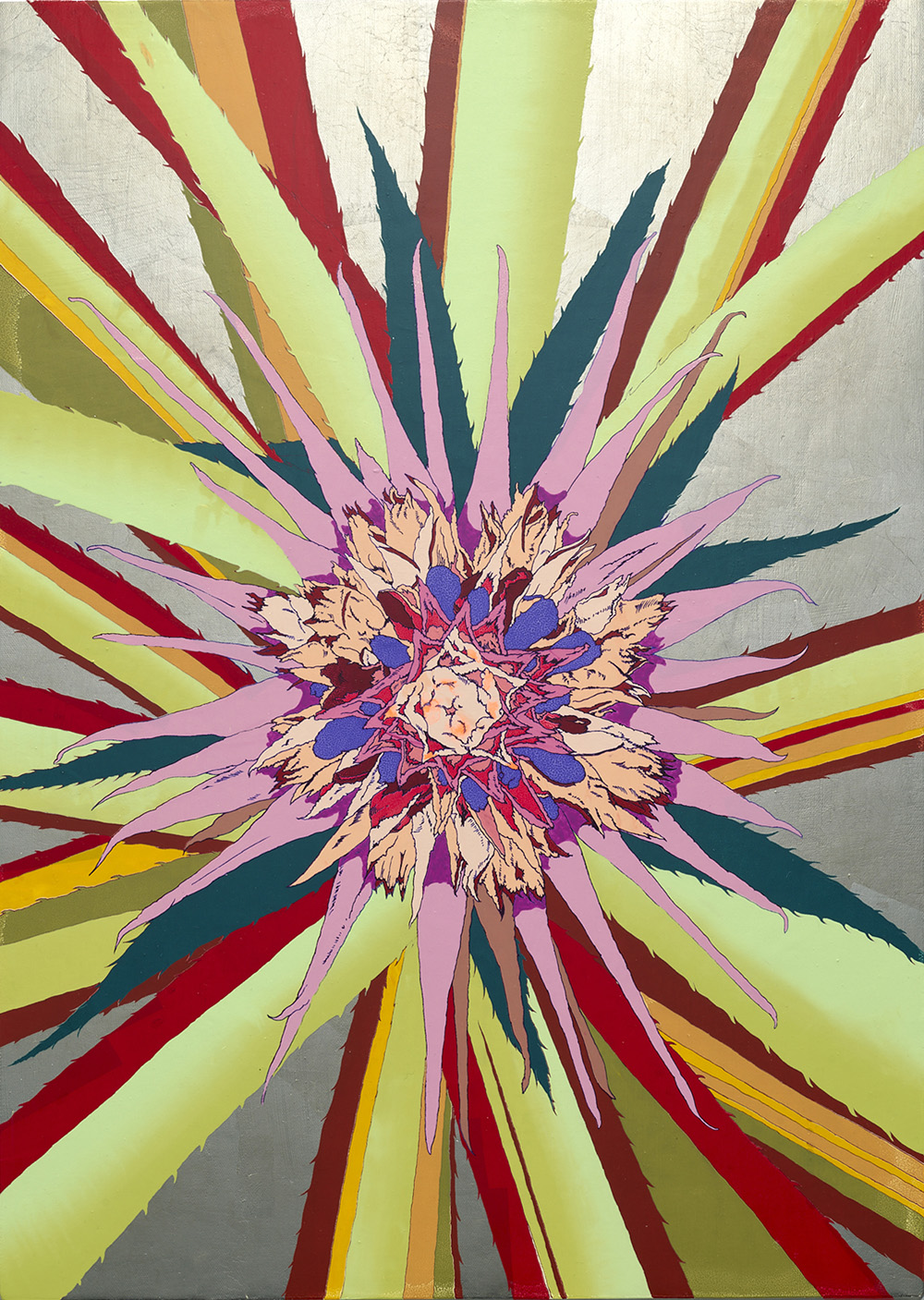Pei-i Hsiao
Taiwan
1990 Born in Tainan; now lives and works in Taipei 2012 B.F.A., Department of Fine Arts, Taipei National University of the Arts 2018 Spring Semester, Student Exchange Program, Kyoto University of Arts and Design, Japan 2019 M.F.A., Department of Fine Arts, Taipei National University of the Arts
Hsiao majored in printmaking at the Taipei National University of the Arts, during which she went to Kyoto University of the Arts as an exchange student to study gold and silver foil techniques. Her creative process begins with a pencil sketch on tracing paper. After completing the sketch, she outlines it on another same-sized piece of tracing paper with a needle pen. Then, she scans the drawing into a digital file, and, from a printmaking perspective, adds color and divides the image into segments via digital software. For larger works, she even divides the drawing into hundreds of color blocks, before printing the color-separated digital files out into transparent films. Next, she places the color blocks on the films in sequence on the silk screen, which are then coated with photosensitive emulsion, and exposed to the light.
Her creative work on canvas begins after hundreds of jigsaw-like silk screen prints are made. To ensure the stability of the material, Hsiao uses Gesso as the primer on the mounted canvas and polishes it to make it smooth. Then she creates the background color or applies gold and silver foil based on the theme and composition. As different foils have various properties, it requires experience to carry out foil cutting and etching. After this, she starts alternating between silk printing of lines and color blocks and hand-painting according to the needs of the picture. It is indeed an arduous task to produce a large number of silk screen prints, especially in terms of the fine lines where the unique texture of the silk screen stands out. The painterly sense of hand-painting and thickness of layered silk screen prints combine to create a distinct quality. The choices and decisions made in this stage are often the most reflective of personality and challenging part of the entire creative process.
Hsiao applies two layers of water-based varnish on the canvas in between each step. The painting is finished with double coats of oil-based varnish. The countless layers are overlaid in a way akin to sculpting on a flat surface. It is not difficult to see that behind all of her steps – ten in total – there is a considerable amount of experimental work. Only in this way can the nuanced texture in the original work, inexpressible on a digital screen, be fully demonstrated.
Life and death, or existence and extinction, undergo a metamorphosis with her “transformation of disasters.” From the society as a whole to the plight of individuals, she repeatedly observes and comprehends human nature through the material in her creations. In her art, Hsiao not so much addresses disasters themselves as “explores ways to get along with ourselves again and again through confronting disasters.” From expressing emotions through objects, dissecting phenomena, coping with fate, portraying human nature, transforming moods, to presenting oneself, Hsiao’s creative trajectories intertwine and influence each other.



